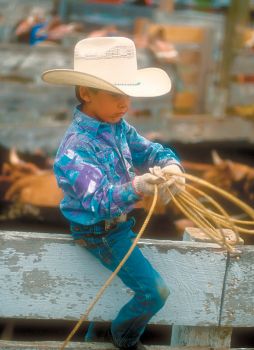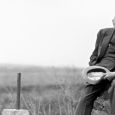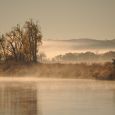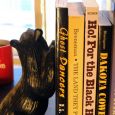The Gift of South Dakota
Subscriptions to South Dakota Magazine make great gifts!
Subscribe today — 1 year (6 issues) is just $29!
Our Three States
America is a great country for diversity. The notion of freedom and opportunity has attracted foreigners to our shores for more than 200 years and created the patchwork of identities and cultures that gives us strength. The vastness of our land area and the diversity of terrain and climate have appealed to different peoples, all of whom have found a place in our nation to call home. A by-product of this diversity can be the rather murky perceptions that one group of Americans has of another.
As a native of Boston, neither my friends nor I had much occasion to focus on South Dakota. When I announced that I planned to spend several months there working on a political campaign I got some curious reactions. Most Bostonians easily confuse South Dakota with its less populated neighbor to the north. I was asked if my office would be in Fargo and how I would like life along the Canadian border.
Another popular misconception is that all of South Dakota is mountainous “wild west” country. This is certainly true of the state’s magnificent Black Hills, but I hardly think farmers along the James River Valley feel much like mountaineers, or cowboys for that matter. Many Bostonians are smug (as they are generally wont to be) in their ignorance and proclaim without the slightest doubt that Sioux Falls is one of the larger cities in Iowa. Of course, I knew better. I had been through the state 15 years ago, seen all there is to see and knew everything there is to know. Or so I thought.
What follows is the result of three months of extensive research. The observations cited and the conclusions reached are the product of many hours of exhaustive probing. Data collection took place throughout the state, from the nightclubs and city streets of Sioux Falls to the cafes in White and Kadoka. No efforts were spared. I dined at the fanciest French restaurant in Sioux Falls, climbed Mount Rushmore and spoke on the steps of the state capitol in Pierre. I also ate at a pork roast in Pukwana, hunted pheasant where none existed and had a newspaper interview in a small northeastern town, where I had to ask all the questions as well as answer them. I therefore offer you an informed Bostonian’s view of the great state of South Dakota.
The first significant thing I learned upon close examination is that there are really three states calling themselves South Dakota. Each has a state capital, a unique economy and a fiercely independent identity. All three meet for a brief summit each year in a neutral place (Pierre), and then return to resume their mutually exclusive co-existence.
East River South Dakota is the most populous state. Its capital is Sioux Falls, which serves as its center for commerce, culture and information. The state runs on a north/south axis along route I-29 and extends as far west as the James River Valley through Mitchell and Huron, north to Aberdeen.
Residents of East River South Dakota are Scandinavian Americans. They drink their coffee black (and plenty of it), root for the Minnesota Twins and Vikings, wear seed caps and call themselves farmers if they are involved in agriculture. Residents of East River South Dakota observe Central Standard Time. They tend to feel the residents of West River are less sophisticated and think mostly of that end of the state as a nice place to visit.
The second largest state is West River South Dakota. Its capital is Rapid City, and it, too, runs on a north/south axis from Hot Springs through Custer, north to Lead, Deadwood, Sturgis, Spearfish and Belle Fourche. Residents of West River South Dakota are western Europeans. They drink their coffee with cream and sugar. They root for the Denver Broncos, wear cowboy hats and call themselves ranchers if they’re involved in agriculture. Residents of West River South Dakota observe Mountain Time. They tend to feel residents of East River South Dakota are snobby and think mostly of that end of the state as a place they’d rather not visit.
The third state of South Dakota is Indian South Dakota. It is spread out over a vast area, with nine identifiable municipalities. The capital is Pine Ridge. Residents of Indian South Dakota are Native Americans. They were here first and now want more of their land back, a claim that particularly bothers West River South Dakotans. Indian South Dakotans are not as visibly committed to coffee, sports or agriculture as South Dakotans from neighboring states, but theirs is the strongest culture. Residents of Indian South Dakota observe a less defined notion of time. They tend to believe that they got along just fine for a long time without either East River or West River at their borders and could easily do so again.
There are other South Dakota colloquialisms and idiosyncrasies that catch the eye:
You Bet — “You Bet” is South Dakotan for “yes,” “you’re right,” “you’re welcome,” “happy to help” and quite a few other phrases. It is typical of South Dakotans’ economy with words, an economy no doubt born of necessity in the cold of a South Dakota winter.
The Wave — The wave is done on back roads and in remote areas. I’m not sure, but I think it may require a pickup truck or a Jeep to be official. Here’s how it is done: two vehicles approach one another from opposite directions, usually trailing a rooster tail of dust. At approximately 50 yards, the drivers of each vehicle raise the index finger of their right hand from the steering wheel without releasing their grip on the wheel. This particular greeting is unique to South Dakota. We have a similar signal in Massachusetts, but it involves a different finger and has a significantly different meaning.
The Nod — South Dakotans are skeptical by nature. This is particularly so when the person talking is from out of town. The stoic nature of these people of the land can be somewhat disconcerting for someone from the East, where emotions are more vociferously displayed. There is one way to know that your message is getting across. It’s the nod. After you’ve done your best to state your case, there is a long and silent pause. If there is no agreement someone will eventually mention that they have to be getting along. But, if you really hit home, what happens is a slight, almost imperceptible, nod. This is done in unison as if on cue. It means that your message has gotten across and they don’t think you’re full of what they spread behind their tractors to make crops grow.
Visit — In Boston a visit involves going to someone’s home. It means, generally, that you have received an invitation to be there. In South Dakota people visit all the time, with or without an invitation. It can even be done at their offices or over the telephone, as in, “I called Dave on the phone and we just visited for a while.”
Say — South Dakotans are polite people and wouldn’t think of saying things like, “Yo! Listen up,” in the middle of a conversation. However, they have devised a more genteel but no less effective means of accomplishing the same thing. It’s called, “Say.” If in the middle of a “visit” (see above) a South Dakotan uses the word “say,” as in “Say, Mary, can I borrow a cup of flour?” It means, “OK, we’ve gotten the formalities covered. I’m now going to ask you a direct question. I want you to pay attention and give me a direct answer.” Not bad for one little word.
Leaving Things Unlocked —People in South Dakota don’t lock things up very often. One friend of mine agreed to lock her house since she was going out of town for the weekend only to find that she didn’t own any keys to her house.
In Boston, the car theft capital of the world, you can almost get your car stolen by slowing down at a stop sign. In South Dakota, people routinely leave keys in their cars and sometimes leave the cars running while they go into the store for a quart of milk or loaf of bread. In South Dakota that means you’ll have a warm car when you return. In Boston it would mean you’re going to be walking home.
Checks for Everything — As far as I can tell, it’s illegal in South Dakota to pay cash for anything except cigarettes and coffee. Sandwiches at the sub shop, dry cleaning, gas and meals at restaurants all must be paid by personal check. This is different from Boston, where an attempt to pay for any of these things by check would be met with gales of laughter and a firm rejection. In the few places in Boston where you can pay by check you must bring your maternal grandmother and the doctor who delivered you for positive identification. No wonder there’s no crime in South Dakota — no one ever carries any money. What are they going to do, steal your checkbook?
About the author — Pat Halley is an author and political strategist. He fell in love with South Dakota years ago as he traveled across the state in a 1973 Plymouth. He wrote this column one afternoon while sitting in his Boston office listening to big city noises and dreading the traffic on the commute home.
Editor’s Note: This story is revised from the July/August 2006 issue of South Dakota Magazine. To order a copy or to subscribe, call (800) 456-5117.











Comments